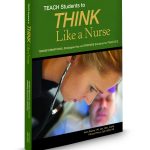
Since it is the end of the semester, many programs which admit every semester will be graduating students. These students who will soon be new nurses who will pass medications every day.
Therefore, it is essential that every student must possess a DEEP UNDERSTANDING of pharmacology to transition successfully and be SAFE in clinical practice.
This is more easily said than done.
Currently, there are more than five thousand medications used in practice, and most nursing drug manuals are well over one thousand pages in length. Nursing drug manuals have content areas that include:
- Indications
- Mechanism of action
- Pharmacologic classification
- Tme/action profile
- Contraindications
- Side effects
- Interactions
- Route and dosage
- Nursing implications
- Patient education
If a student has multiple medications to pass, what should they be able to state and understand to be safe?
The short answer…the mechanism of action.
But for the mechanism of action to be deeply understood, students need to UNDERSTAND pathophysiology.
Students can and do memorize much of what they are taught. That does not mean they understand it. Understanding what is most important is the priority for every nurse educator.
Contextualizing Patho
To transform nursing education, Educating Nurses: A Call for Radical Transformation identified that content must be contextualized to the bedside so students can see why it is relevant.
This can be done by merely changing the way you teach. Contextualize pathophysiology to practice by ensuring that your students genuinely understand the mechanism of action of the most commonly used drugs in both the classroom and especially the clinical settings.
Anatomy and Physiology (A&P) is a prerequisite for most nursing programs. This class is typically taught with little to no contextualization to nursing practice. Essential content and concepts such as beta and alpha receptors, preload, afterload, Starling’s law, and the classic formula CO=SVxHR have no clear clinical contextual hook for pre-nursing students to understand how relevant or important this is to bedside practice.
For example, as a clinical faculty assessing a student’s safety to pass atenolol, most of my students were able to identify the pharmacologic classification of atenolol as a beta blocker. But when I asked, “What is a beta blocker blocking?” most students had no response or were unable to answer the question correctly.
See for yourself. Ask your students:
- What is a beta blocker blocking?
- What is an ACE inhibitor inhibiting?
- What is a calcium channel blocker blocking?
Then you will know how much they understand this essential aspect of pharmacology!
Encourage your students to recognize the importance of understanding the mechanism of action so they can be safe in practice and strengthen their ability to think critically.
Do You Feast on A&P?
But there is a potential problem that needs to be identified.
To teach students the deeper level of understanding and applying pathophysiology to practice, nurse educators must also possess this deep understanding themselves. As I travel around the country, I realize that most educators do not feast and enjoy pathophysiology! It is a work in progress for many.
But just as students need to reflect and identify weaknesses to make them a required strength, nurse educators must do the same as it relates to their understanding of pathophysiology. If it is a weakness for you, resolve to do what is needed to make it a strength so you can effectively teach it to your students!
Importance of Mechanism of Action
Atenolol
Let’s take a look at how this works in practice when administering atenolol.
This is the mechanism of action for atenolol as stated from Micromedex, an online database used by many hospitals:
“Atenolol is a synthetic beta (1)-selective adrenoreceptor blocking agent without membrane stabilizing or intrinsic sympathomimetic activities. It inhibits beta (2)-adrenoreceptors primarily found in bronchial and vascular musculature at higher doses”
When the nurse UNDERSTANDS the pathophysiology of the mechanism of action and is not allowed to recite it out of a drug handbook and know how it impacts the body, essential nursing assessments logically follow.
To understand the physiologic impact of atenolol on their patient, students must be able to recognize the differences between beta 1 and beta two adrenergic receptors, and the physiologic effects of this beta blockage to the heart and lungs.
When the mechanism of action is deeply understood, and how it impacts the body, nursing assessments that are required to be safe to administer and follow up assessments afterward become readily evident without even having to consult the drug manual! The need to assess the heart rate and blood pressure become readily apparent.
Amiodarone
Let’s do another cardiac medication that is used as an antiarrhythmic. This is the mechanism of action for amiodarone as stated from Micromedex:
“Amiodarone is an antiarrhythmic drug with predominant class III effects of lengthening cardiac action potential and blocking myocardial potassium channels leading to slowed conduction and prolonged refractoriness.”
For a student to safely administer amiodarone, they must UNDERSTAND the cardiac electrophysiology concepts of the action potential, refractory period, and slowed conduction, and how these physiologic effects will directly affect heart rate and rhythm.
This is difficult content but yet expected for the professional nurse. Make it a priority to contextualize the applied sciences of both pathophysiology and pharmacology by expecting your students to understand the mechanism of action of the most commonly administered drugs in your specific clinical setting.
In Closing
It is said that no student will rise to low expectations.
Communicate your high but realistic expectations to have your students possess a higher bar of understanding the mechanism of action.
Contextualize pathophysiology and pharmacology in both the classroom setting by discussing this content in your lecture of various disease topics, as well as in the clinical setting with the most commonly used medications in your clinical setting. But be sure you too possess this deep knowledge yourself!
Do this, and your students will be safe and well prepared for the NCLEX® and able to transition successfully to real-world clinical practice.
What do you think?
What strategies have you found successful to contextualize patho to clinical practice?
Comment below and let the conversation begin!
Related Blogs
- How to Strengthen Student Understanding of Cardiac Medications
- Why Patho Must be Deeply Understood to Think Like a Nurse
- Questions Students Must Be Asked in Clinical to Think Like a Nurse
References
Benner, P., Sutphen, M., Leonard, V., & Day, L. (2010). Educating nurses: A call for radical transformation. San Francisco, CA: Jossey-Bass.
Practical Resource for Educators
I wrote TEACH Students to THINK Like a Nurse to be a written guide to successfully implement educational best-practice to develop the thinking required for practice and the NCLEX®. This includes practical strategies for teaching pharmacology!
CLICK HERE to see how you can get this book free when you subscribe to my all-inclusive membership for nurse educators!
Keith Rischer – PhD, RN, CEN
As a nurse with over 35 years of experience who remained in practice as an educator, I’ve witnessed the gap between how nursing is taught and how it is practiced, and I decided to do something about it! Read more…
The Ultimate Solution to Develop Clinical Judgment Skills
KeithRN’s Think Like a Nurse Membership
Access exclusive active learning resources for faculty and students, including KeithRN Case Studies, making it your go-to resource.




